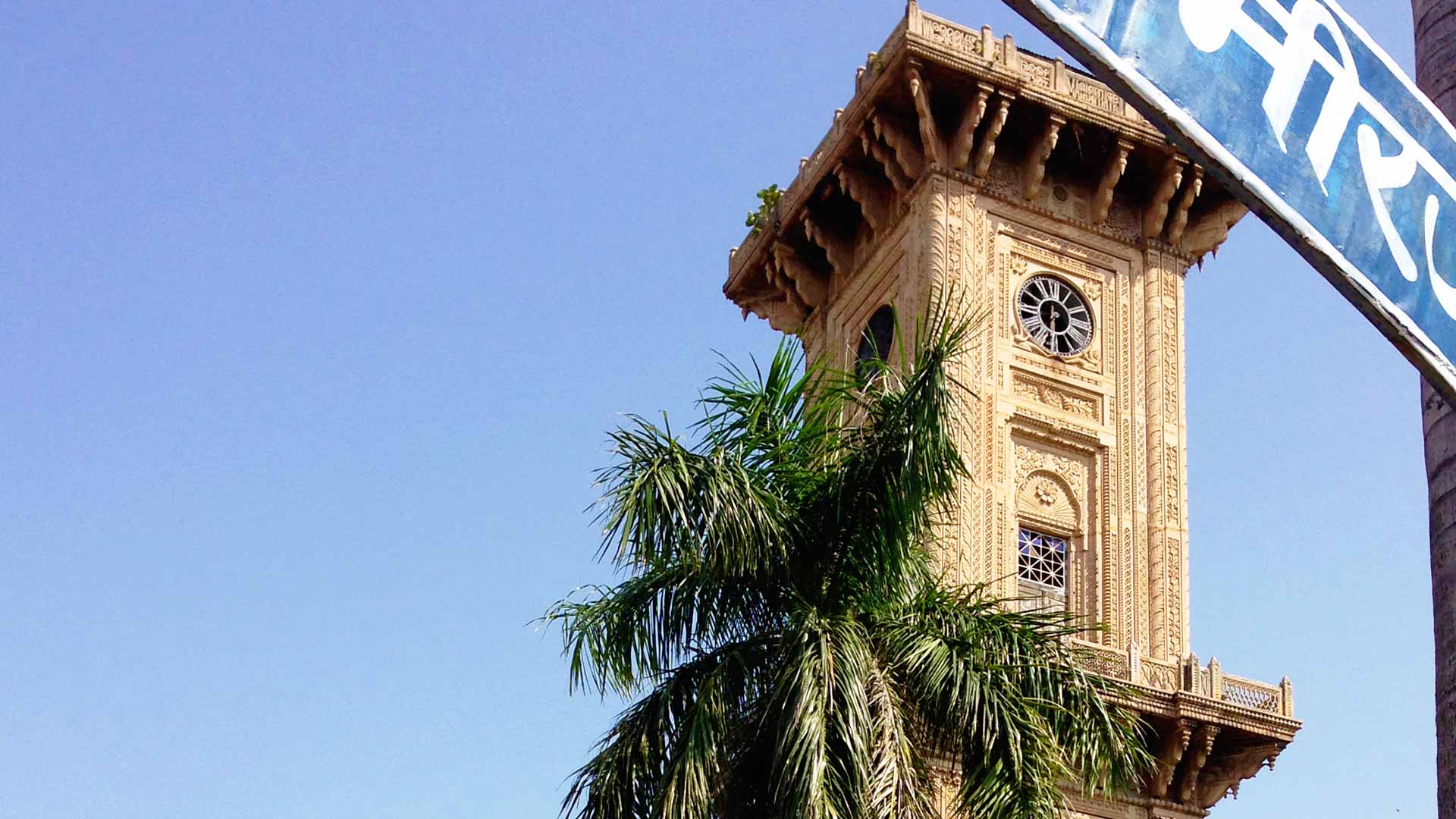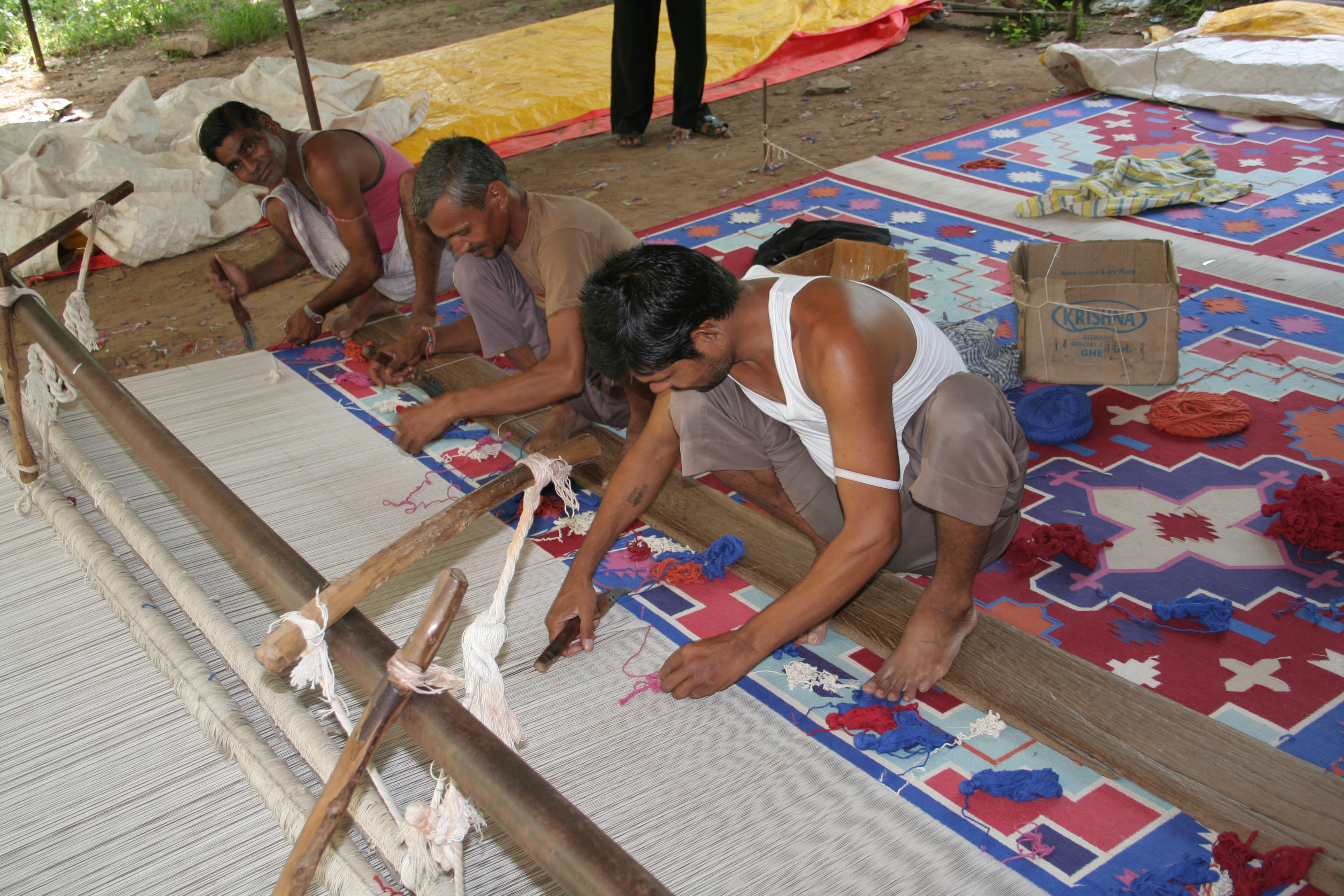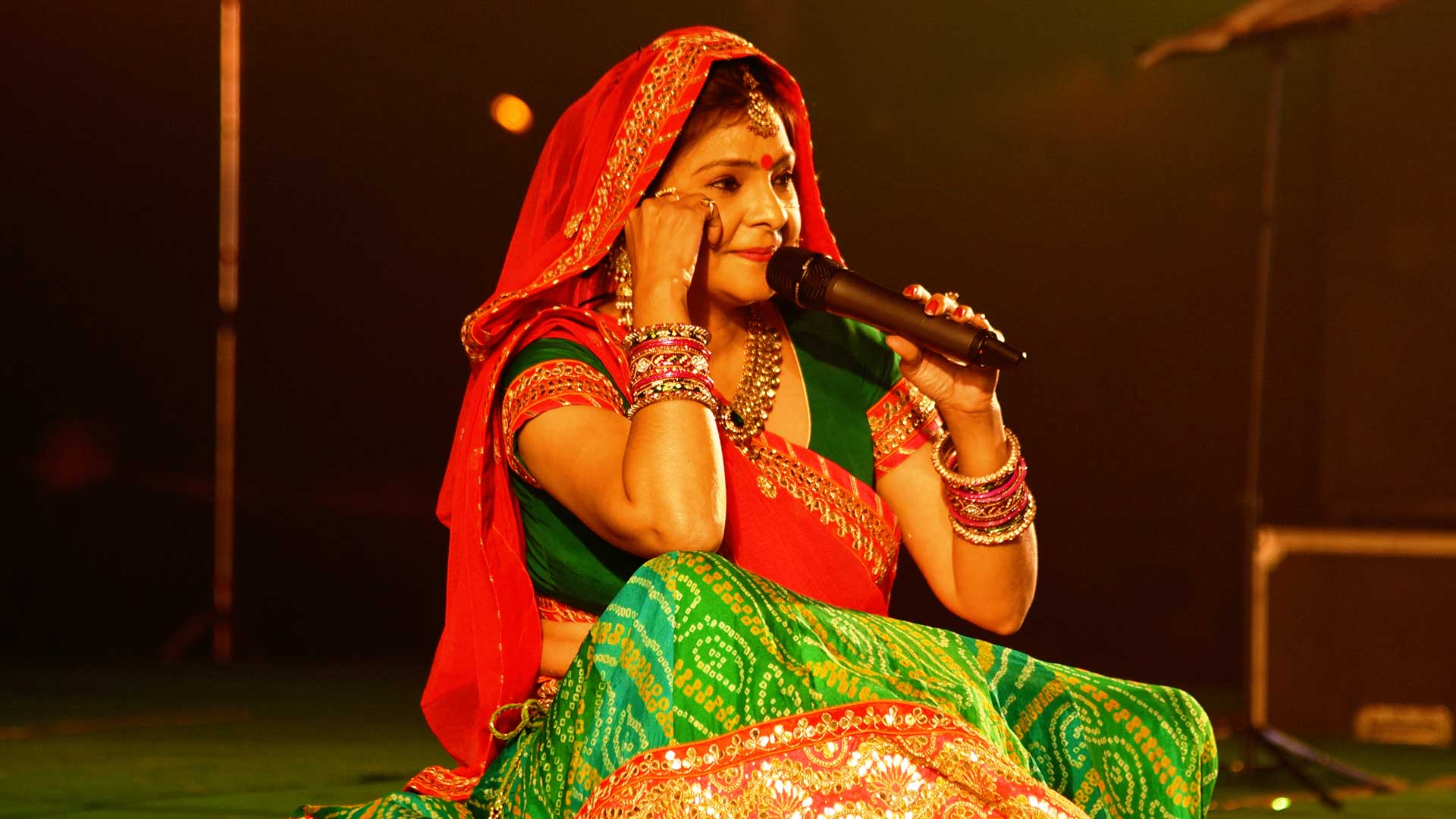Culture Heritage of Mirzapur: Mirzapur, a small town in Uttar Pradesh, is known for its carpet weaving and brassware industries rather than its culture and lifestyle. However, the city has gained popularity for its natural beauty and charming picnic spots in recent years. Although it may have yet to adapt to vibrant city life, Mirzapur is known for its Ganga-Jamuni culture that blends rural and urban life.
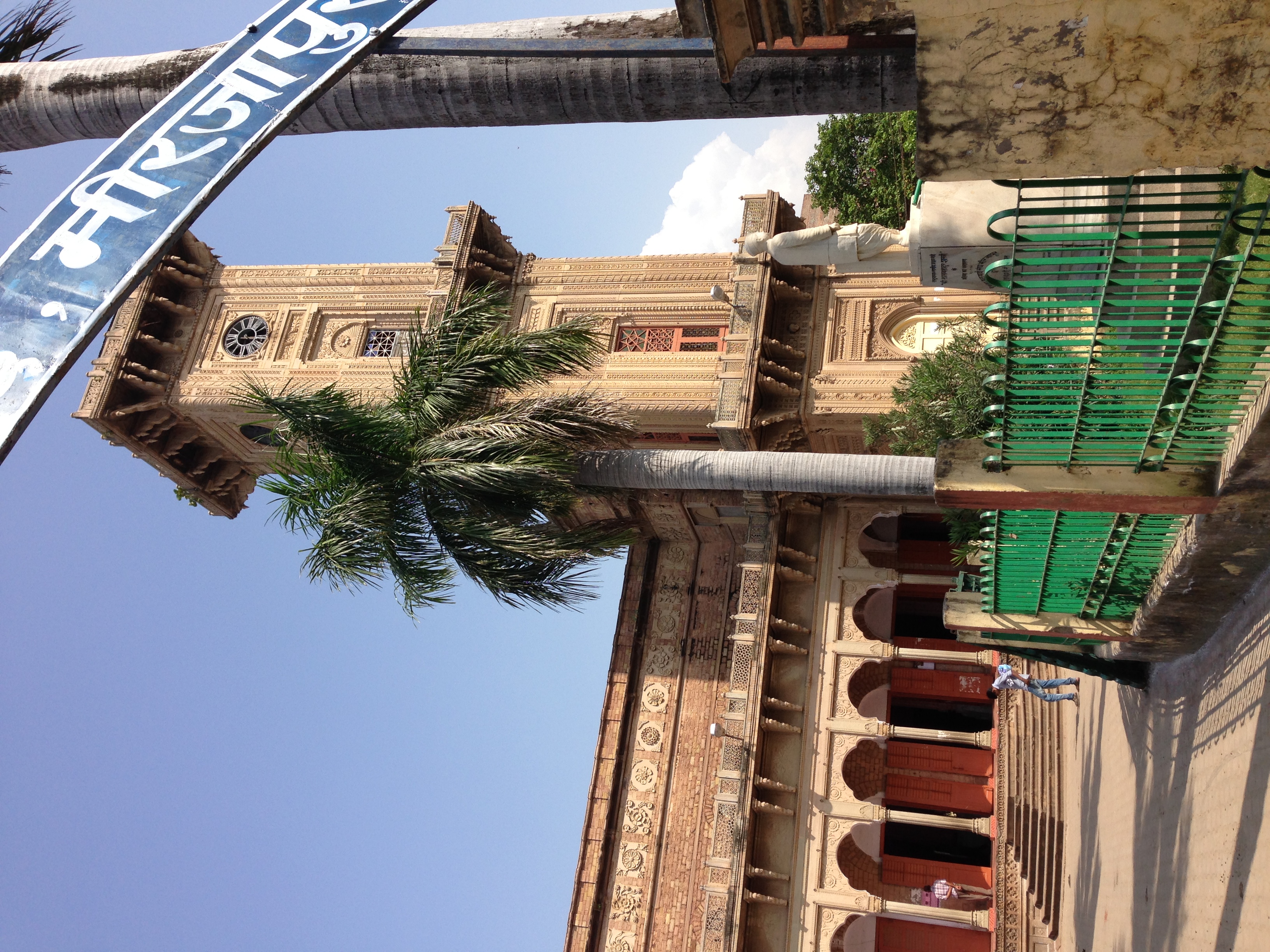
The pastoral life of Mirzapur is evident in its folk music, dance, and poetry. In contrast, specks of urban life can be seen in branded apparel and scents. The traditional attire of rural Mirzapur includes dhoti or gamchha (towel) and kurta for men. At the same time, women wear traditional jewelry like kada (bracelet), bajuband (arm bands), hasli (thick neck rings), bichhiya (toe rings), kanachadi (earrings), and kardhani (silver belt).
If you are interested in exploring Mirzapur’s culture and heritage, there are many things you can do. For example, you can visit the city’s many temples and mosques, attend one of its many festivals, or visit one of its historical sites. You can also learn more about the city’s culture and heritage by visiting the Mirzapur Museum, which houses a collection of artifacts from the city’s past.
Cultural Festivals and Celebrations
Mirzapur has its own folk culture, with popular genres like Kajali, Biraha, Lachari, Lavani, and Belwariya. Biraha is a prevalent folk genre based on romantic or chivalrous tales, stories on goddesses, or contemporary issues. The city also celebrates several festivals yearly, steeped in ancient folklore, mythology, and history.

One of the most significant festivals celebrated in Mirzapur is the Kajari Mahotsav, dedicated to King Kantit Naresh’s daughter Kajali. Kajali sang sad love songs during her lonely days, remembering every resident loved her husband and her melodious voice. After her death, the entire district retains her through the Kajari festival.
Other popular festivals in the city include Jeevitputrika, Ganesh Dashehra, Lalahi Chatth, Chaitra Navratra, and Shardiya. The city also has numerous fairs, including the Lohandi Mela, Ojhala Mela, Litti bati (Bhanta) Ka Mela, and Horaha Gaderi Ka Mela.
Vindhya Mahotsav
Vindhya Mahotsav is a cultural extravaganza that celebrates the artistic talents and heritage of the Vindhya region in India. This grand festival showcases the diverse art forms, music, dance, and cultural traditions that have flourished in the Vindhya region over the centuries. It is a week-long event with vibrant performances, exhibitions, and cultural activities that attract participants and spectators nationwide.
The festival takes place in a picturesque location amidst the scenic beauty of the Vindhya Range, adding to its allure. It is a platform for established and upcoming artists to showcase their skills and talents, promoting the region’s rich cultural heritage. The festival is organized by local authorities, cultural organizations, and enthusiasts who work tirelessly to create an immersive and memorable experience for visitors.

During Vindhya Mahotsav, the air is filled with the melodious strains of classical music, folk songs, and traditional dance forms. Renowned musicians, dancers, and performers from different parts of the country come together to mesmerize the audience with their captivating performances. The festival offers a kaleidoscope of art forms, ranging from classical Hindustani and Carnatic music to folk dances like Ghoomar, Kalbelia, and Garba.
Art exhibitions and craft stalls are set up to display the intricate crafts and artwork unique to the Vindhya region. Visitors can witness the mastery of local artisans in various forms, such as pottery, wood carving, painting, and textile weaving. The stalls offer a chance to purchase exquisite handicrafts, traditional attire, and other souvenirs that reflect the rich cultural heritage.
One of the highlights of Vindhya Mahotsav is the food festival, where visitors can indulge in a gastronomic delight. The festival showcases the region’s culinary diversity, offering a wide range of traditional dishes and local delicacies. From spicy street food to delectable sweets, the food festival caters to every palate, providing a memorable culinary experience.
Vindhya Mahotsav also includes cultural seminars, workshops, and interactive sessions, providing a platform for discussions and exchanging ideas about art, culture, and heritage. Scholars, experts, and enthusiasts share their knowledge, insights, and experiences, fostering a deeper understanding and appreciation of the Vindhya region’s cultural legacy.
The festival concludes with a grand finale that brings together all participating artists for a breathtaking performance on one stage. The energy and enthusiasm of the performers, combined with the support and applause of the audience, create an electrifying atmosphere, leaving a lasting impression on everyone present.
Vindhya Mahotsav not only celebrates the culture and heritage of the Vindhya region but also promotes tourism and provides a platform for artists to showcase their talents. It serves as a bridge between the past and the present, preserving rich traditions while embracing contemporary artistic expressions. The festival not only entertains but also educates and inspires, fostering a sense of pride and belonging among the people of the Vindhya region.
So, if you are passionate about art, culture, and heritage, mark your calendars for Vindhya Mahotsav and immerse yourself in the enchanting world of music, dance, crafts, and culinary delights the festival offers. It is an experience that will leave you with cherished memories and a deeper appreciation for the vibrant cultural tapestry of the Vindhya region.
Litti Bati Ka Mela
Litti bati is a popular dish in the state of Bihar and Jharkhand, and it has also made its way into the culinary traditions of Mirzapur. The “Litti Bati Ka Mela” is organized annually in Mirzapur, bringing together food enthusiasts from across the region to celebrate this dish.
The festival is usually held in the winter when the weather is pleasant and perfect for outdoor events. The venue for the celebration is typically an open field or a park decorated with colorful lights and stalls selling a wide range of traditional dishes, including litti bati.
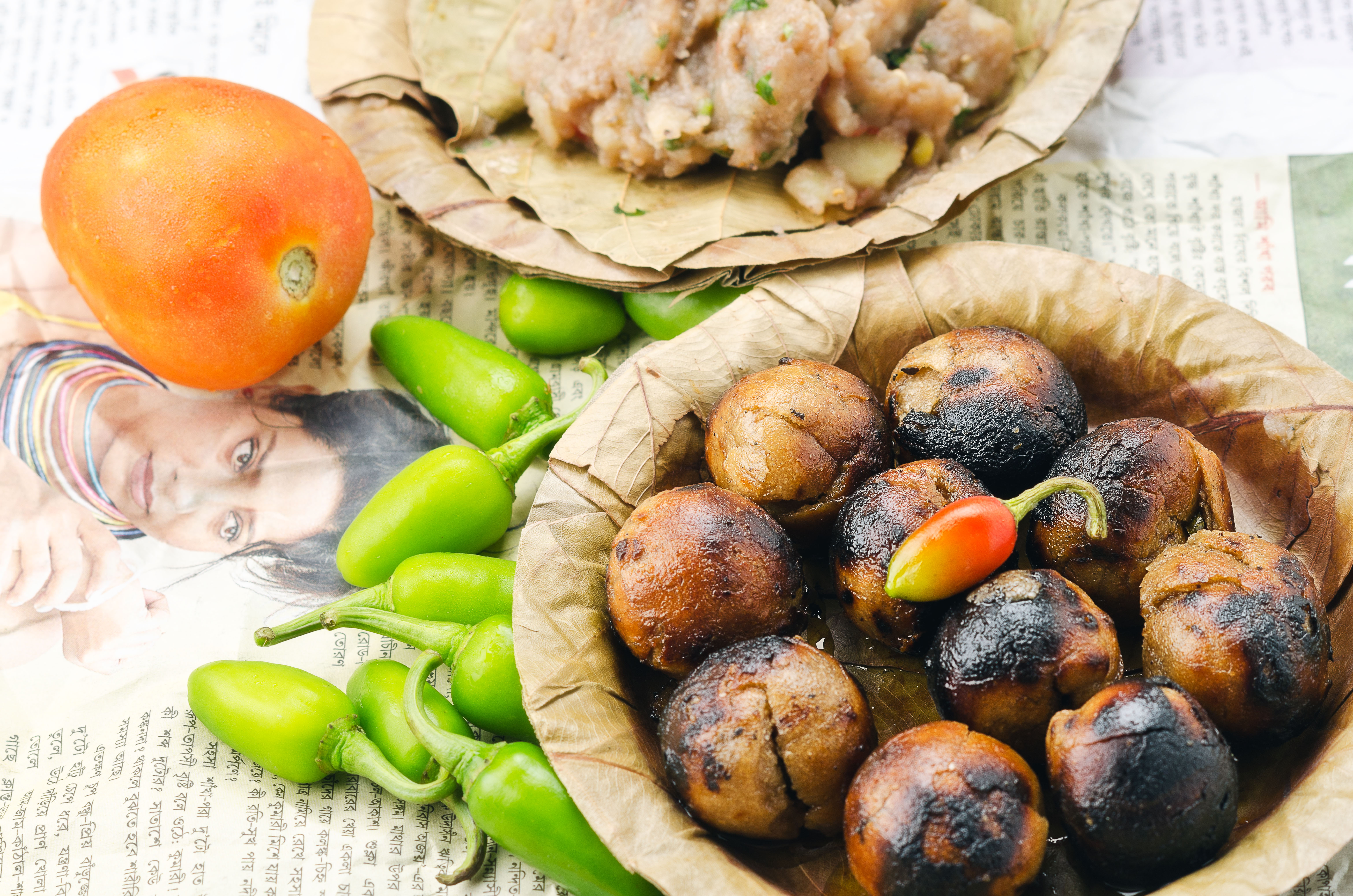
The litti bati is made by mixing flour, gram flour, and wheat bran with spices like cumin, coriander, and chili powder. The mixture is then rolled into small balls and stuffed with a filling made of roasted gram flour, chana dal, and spices. Finally, the balls are baked in a wood-fired oven until golden brown and crispy.
At the Litti Bati Ka Mela, you can find different litti bati, including plain, spicy, and sweet. Some vendors also offer fusion versions of the dish, such as pizza litti and cheese-stuffed litti.
Apart from the food stalls, the festival also features cultural events, such as folk music, dance performances, and various games and activities for children. Visitors can also shop for handicrafts and souvenirs from local artisans and craftsmen.
The “Litti Bati Ka Mela” is an excellent opportunity to immerse oneself in Mirzapur’s local food and culture. The festival provides local businesses and artists a platform to showcase their talents. Moreover, it brings together people from different communities to celebrate their shared heritage.
Lalahi Chhath
Lalahi Chhatth is a famous festival celebrated in the Vindhyachal region of the U.P, particularly in Mirzapur. The festival is dedicated to worshiping the Sun God, Surya Dev. It is celebrated twice yearly, once in Chaitra (March-April) and again in Kartik (October-November).
The festival is celebrated over four days and is considered one of the most significant cultural events in the region. The first day is Nahai Khai, during which devotees take a holy dip in the river Ganges and fast throughout the day. The second day, Kharna, is marked by preparing traditional sweets and offerings to the Sun God.
On the third day, known as Chhath Sandhya Arghya, devotees offer prayers to the setting sun and offer milk, sugarcane, and bananas. The final day, Chhath Paran, is celebrated on the morning of the fourth day. Again, devotees offer prayers to the rising sun.
The festival holds immense significance in the Hindu religion and symbolizes purity, faith, and devotion. Moreover, worshipping the Sun God during Lalahi Chatth is believed to bring the devotees prosperity, good health, and longevity.
The celebration of Lalahi Chatth is accompanied by several customs and rituals, including the construction of temporary bamboo huts, known as kathghars, near the river Ganges, where devotees perform the morning and evening rituals. In addition, devotees decorate their homes and surroundings with colorful lights, flowers, and rangolis.
The festival also showcases the rich cultural heritage of the region, with traditional folk songs and dances being performed by locals. In addition, the streets and markets of Mirzapur are decorated with colorful banners and stalls selling traditional delicacies, sweets, and handcrafted items.
Overall, Lalahi Chatth is a vibrant and colorful festival that celebrates the cultural and religious heritage of the Vindhyachal region. The festival brings people from all walks of life together and promotes unity, harmony, and devotion.
Ojhala Mela
Ojhala Mela is an annual fair in Mirzapur, Uttar Pradesh, India. The fair is held in Ojhala village, located approximately 10 km from the central city of Mirzapur. The Ojhala Mela is one of the most popular fairs in the region, and it attracts a large number of visitors from Mirzapur and its neighboring areas.
The Ojhala Mela is primarily a cultural fair, and it is known for its vibrant and colorful celebrations. The fair usually lasts around five days in March or April. The local community organizes the fair, allowing the people to come together and celebrate their culture and heritage.
The fair features a wide variety of activities and events. However, one of the main highlights of the fair is the cultural program, which includes traditional dance and music performances by local artists. These performances are a great way to showcase the rich cultural heritage of Mirzapur and its neighboring areas.

Another critical aspect of the Ojhala Mela is the trade fair, which allows local artisans and craftsmen to showcase their products. In addition, visitors can browse various handicrafts, including pottery, textiles, and jewelry. They can also sample local delicacies and snacks.
In addition to the cultural and trade events, the Ojhala Mela also features various fun activities and games for children and adults alike. Visitors can participate in games like balloon shooting, ring toss, and other traditional fair games.
One of the unique features of the Ojhala Mela is the presence of a unique fair called the ‘Kela-Khod’ fair. This fair is dedicated to the local banana farmers, who showcase their products and compete to win prizes for the best quality bananas. The ‘Kela-Khod’ fair is a great way to promote local agriculture and celebrate the hard work of the farmers.
The Ojhala Mela is also an excellent opportunity for visitors to explore the region’s natural beauty. The fair is held in the village of Ojhala, surrounded by lush green forests and hills. Visitors can stroll through the countryside and enjoy the fresh air and natural scenery.
The Ojhala Mela celebrates Mirzapur’s rich cultural heritage, natural beauty, and neighboring areas. The fair allows the local community to unite and celebrate their traditions and customs while offering visitors a chance to experience this region’s vibrant and colorful culture.
Lohandi Mela
Lohandi Mela is an annual fair held in Mirzapur, Uttar Pradesh. This fair is held on the first Tuesday of the Hindu month of Chaitra, which usually falls in March or April. The Lohandi Mela is known for its vibrant atmosphere and attracts thousands of visitors from different parts of the country.
The Lohandi Mela is a significant visitor attraction featuring artistic tattoo design stalls. The fair is named after Lohandi Mahaveer, lord Hanuman. According to folklore, Lohandi Mahaveer was a saint who possessed supernatural powers and used them to help the underprivileged and needy. He is also said to have had the ability to turn iron into gold.
The Lohandi Mela is a celebration of Lohandi Mahaveer’s life and his legacy. The fair is held at the Lohandi Mahaveer Temple, located in the heart of Mirzapur. The temple is dedicated to Lohandi Mahaveer and is one of the most visited religious sites in the city.
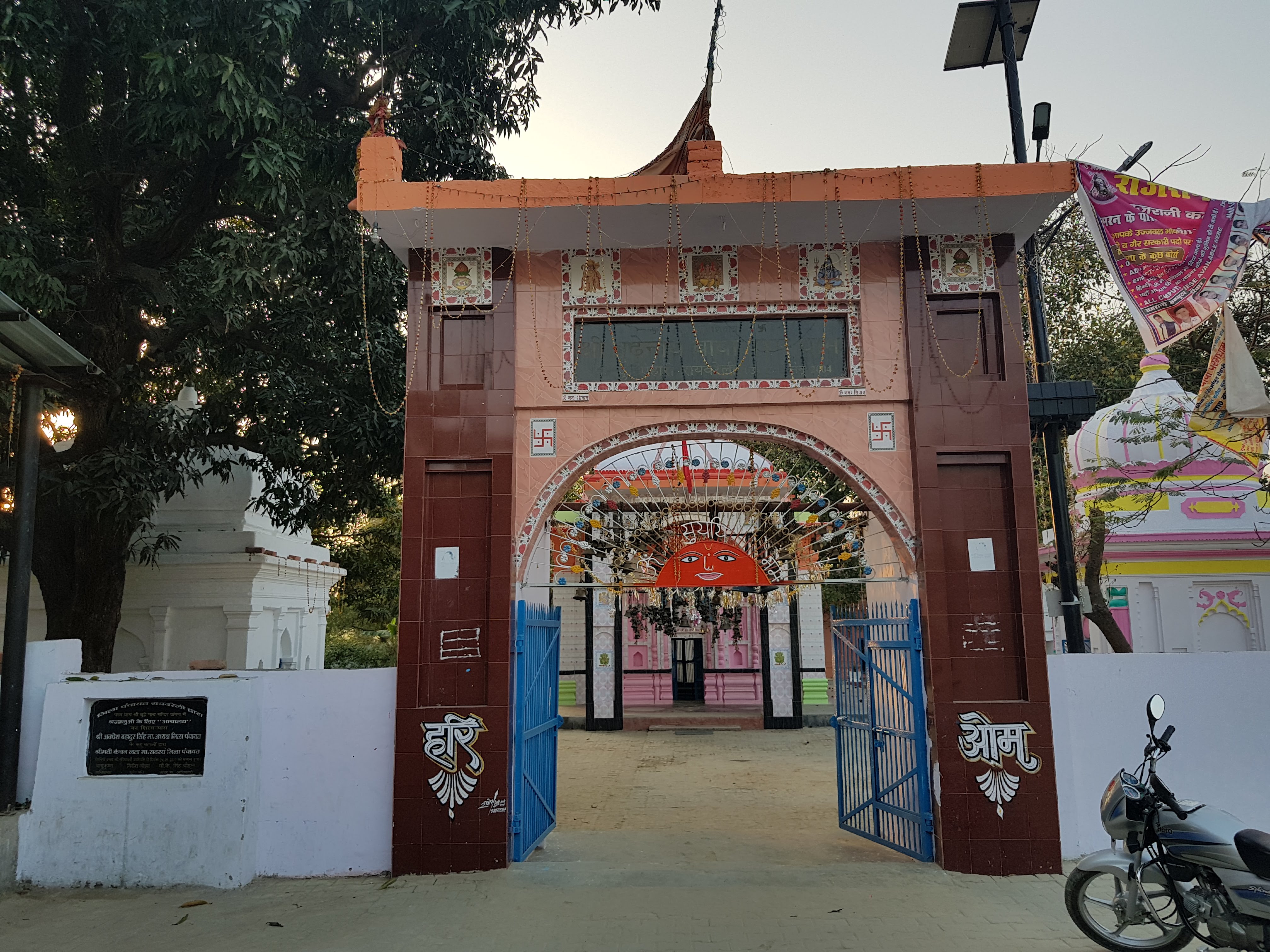
During the Lohandi Mela, the temple and its surroundings are decorated with colorful lights and vibrant decorations. The fairground has numerous stalls selling various items, including handicrafts, clothing, jewelry, and food. There are also several rides and games for children and adults alike.
The Lohandi Mela celebrates Lohandi Mahaveer’s life and showcases local culture. Visitors can buy traditional handicrafts and taste local delicacies.
Another highlight of the Lohandi Mela is the Mahaveer Lohandi Ka Mela. This is a grand procession on the day of the fair. The chariot carries the idol of Lohandi Mahaveer, accompanied by dancers, musicians, and devotees. The parade makes its way through the streets of Mirzapur, attracting large crowds of spectators.
Overall, the Lohandi Mela is a vibrant and colorful celebration of the rich cultural heritage of Mirzapur. It is a must-visit for anyone interested in experiencing this beautiful city’s unique traditions and customs.
Traditional Crafts and Handicrafts
Exploring the Art of Carpet Weaving: A Rich Tradition in Mirzapur
Carpet weaving is an ancient craft that holds a special place in the cultural heritage of Mirzapur, a city in Uttar Pradesh, India. Renowned for its exquisite hand-knotted carpets, Mirzapur has gained recognition nationally and internationally for its exceptional craftsmanship and artistic designs. In this article, we will delve into the art of carpet weaving, its significance, the process involved, and the enduring legacy of this traditional craft in Mirzapur.
1. The Significance of Carpet Weaving in Mirzapur

Carpet weaving in Mirzapur is not merely a skill but an integral part of the city’s identity and heritage. The art form has been passed down through generations, with artisans meticulously weaving intricate patterns and motifs into each carpet. These carpets are more than just decorative pieces; they are cultural treasures embodying Mirzapur’s rich history, traditions, and artistic flair.
2. The Process of Carpet Weaving
Carpet weaving is a labor-intensive process that requires skill, patience, and attention to detail. Let’s explore the step-by-step process involved in creating these remarkable works of art:
2.1 Designing and Pattern Formation
The first step in carpet weaving is the design and pattern formation. Master weavers, often called “ustads,” sketch intricate patterns on graph paper. Various sources inspire these designs, including nature, mythology, and historical elements. The patterns are then transferred onto the loom, serving as a guide for the weavers.
2.2 Selection of Materials
Next, the weavers carefully select the materials for the carpet. The primary material used is wool, obtained from sheep or goats, known for its durability and softness. In some cases, silk is also used to add a touch of elegance and refinement to the carpets. The dyes used for coloring the wool are usually derived from natural sources, such as plants and minerals, to maintain the authenticity and richness of the colors.
2.3 Hand-Knotting the Carpets
The heart of carpet weaving lies in the intricate process of hand-knotting. Weavers meticulously tie individual knots onto the warp threads, creating the desired pattern and design. The density of the knots determines the level of detail and intricacy of the carpet. This process requires immense skill and precision, as a single carpet can consist of thousands of knots.
2.4 Finishing Touches
Once the weaving is complete, the carpet undergoes a series of finishing touches. It is trimmed to achieve an even and uniform pile height. The edges are then reinforced to ensure durability. The carpet is carefully washed, dried, and stretched to enhance its appearance and quality. Finally, the carpet undergoes a thorough inspection to ensure it meets the high standards of Mirzapur’s carpet weaving tradition.
3. The Legacy of Mirzapur’s Carpet Weaving
Mirzapur’s carpet weaving industry has flourished over the years, establishing a legacy that continues to thrive today. The city’s carpets are renowned for their exceptional craftsmanship, intricate designs, and superior quality. Mirzapur carpets have found their way into homes, offices, and institutions worldwide, adorning floors with their timeless beauty.
4. Economic Impact and Empowerment
Carpet weaving plays a significant role in the economic development of Mirzapur. The craft provides employment opportunities to many skilled artisans, empowering
them economically and socially. The intricate art of carpet weaving has not only sustained livelihoods but has also uplifted the status of these artisans, preserving a traditional craft in the modern world.
5. Preservation and Revitalization Efforts
Recognizing the importance of preserving this cultural heritage, various organizations and institutions have undertaken initiatives to promote and revive the art of carpet weaving in Mirzapur. Efforts such as skill development programs, design innovation, and market linkages have been instrumental in ensuring the sustainability of this traditional craft.
Carpet weaving in Mirzapur is an art form that exemplifies the city’s rich culture and heritage. The artisans’ intricate designs, impeccable craftsmanship, and dedication contribute to the creation of exquisite carpets that are cherished globally. The legacy of Mirzapur’s carpet weaving industry continues to thrive, empowering artisans and preserving a traditional craft that encapsulates the essence of the city’s artistic brilliance.
Brassware: Exploring the Artistry and Elegance
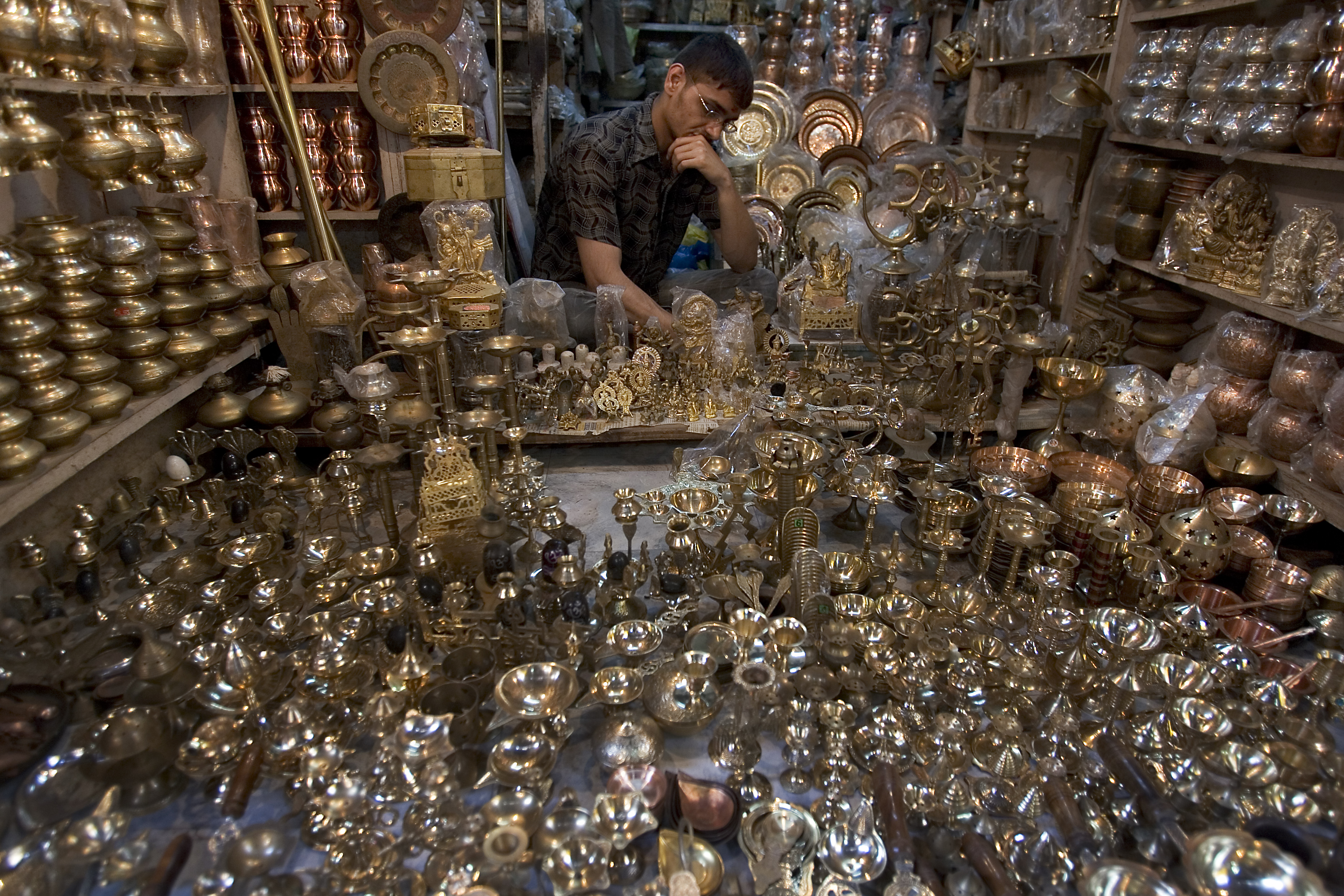
Brassware is a traditional craft that has captivated art enthusiasts for centuries. The art of working with brass, an alloy of copper and zinc, has a rich history and holds a special place in handicrafts. Mirzapur, a city known for its artistic heritage, has been a hub for brassware production, showcasing the exceptional skills of its artisans.
1. The Craftsmanship Behind Brassware
The art of brassware involves shaping and molding brass into exquisite and intricate pieces. Skilled artisans employ casting, hammering, engraving, and embossing techniques to create stunning brass items. The craftsmanship behind brassware requires precision, attention to detail, and a deep understanding of the properties of brass.
2. Mirzapur’s Brassware Tradition
Mirzapur has a long-standing tradition of producing exceptional brassware. The city’s artisans have honed their skills over generations, passing down their knowledge and techniques from one artisan to another. Mirzapur’s artisans’ artistic flair and dedication have made the city renowned for its brassware.
3. Exquisite Brassware Products
Mirzapur’s brassware products encompass a wide range of items that showcase the versatility and beauty of brass. Here are some notable examples:
3.1 Utensils and Tableware
Brass utensils and tableware add a touch of elegance and sophistication to any dining experience. From intricately designed bowls and plates to traditional tumblers and pitchers, brassware enhances the aesthetics of the dining table while being functional.
3.2 Decorative Pieces
Brass decorative pieces are treasured for their intricate designs and exquisite craftsmanship. From figurines and sculptures to wall hangings and lamps, these pieces add a touch of luxury and charm to any space. The play of light on the polished brass surface creates a mesmerizing effect, enhancing the room’s ambiance.
3.3 Puja Items
Brass puja items hold immense significance in religious rituals and ceremonies. Mirzapur’s artisans create beautifully crafted brass diyas (oil lamps), incense holders, bells, and idols used in temples and homes for worship. These sacred brassware items are considered auspicious and are intricately designed to reflect the divine.
4. The Artistry and Techniques
The artistry behind brassware lies in the mastery of various techniques artisans employ. Here are some prominent techniques used in creating brassware:
4.1 Embossing
Embossing is a technique that involves raising or shaping the brass surface to create intricate designs and patterns. Skilled artisans use specialized tools to meticulously carve out detailed motifs, adding depth and texture to the brassware.
4.2 Engraving
Engraving is the process of incising designs onto the surface of the brassware. It requires precision and a steady hand to create intricate patterns and inscriptions. Engraved brassware often showcases delicate artwork and serves as a testament to the skill and artistry of the artisans.
4.3 Filigree
Filigree is a technique where thin wires of brass are twisted and shaped to create delicate and ornate designs. The wires are intricately interwoven and soldered to form intricate patterns and motifs. Filigree work in brassware accurately displays craftsmanship and attention to detail.
5. Preserving
In a world of mass-produced items, preserving the tradition of brassware craftsmanship is crucial. It ensures the continuation of this art form and supports the livelihoods of skilled artisans. To promote and sustain the brassware tradition, initiatives such as skill development programs, workshops, and exhibitions can be undertaken to encourage the younger generation to learn and carry forward this unique craft.

Mirzapur’s brassware exemplifies the union of artistry and functionality. The craftsmanship and dedication of its skilled artisans are evident in every intricately designed piece. From the luster of polished brass to the delicate engravings and embossing, Mirzapur’s brassware reflects the city’s rich cultural heritage. By appreciating and supporting this traditional craft, we contribute to preserving and continuing a centuries-old art form.
Prominent Personalities
1. Lalita Shastri
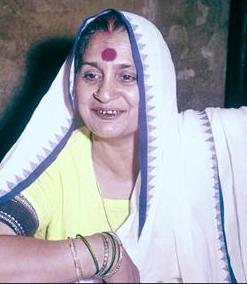
Lalita Shastri is an influential figure in social work and women’s empowerment. She has dedicated her life to advocating for women’s rights and improving their access to education and healthcare. Lalita Shastri has been actively involved in various non-profit organizations and initiatives to uplift marginalized communities and create equal opportunities for all. Her tireless efforts have earned her recognition and respect in society.
2. Prachi Mishra

Prachi Mishra is a renowned Indian model and beauty queen. She gained prominence after winning the Femina Miss India Earth title in 2012. Prachi’s charm, grace, and intelligence have made her a sought-after personality in the fashion and entertainment industry. Apart from her successful modeling career, she has also been actively involved in philanthropic activities, supporting causes related to education and women’s empowerment.
3. Ashutosh (politician)
Ashutosh, a well-known politician, has made significant contributions to Indian politics. He has been associated with a prominent political party and has served in various leadership roles. Ashutosh’s eloquence and articulation have made him a prominent spokesperson and debater, representing his party’s ideologies and views. His insightful analysis and persuasive communication skills have earned him a solid following among political enthusiasts.
In conclusion, although Mirzapur may not be known for its lifestyle and culture, the city’s Ganga-Jamuni culture, folk music, dance, poetry, and numerous festivals and fairs make it an attractive destination for visitors who want to experience the rural and urban blend of life.
What is the best time to visit Mirzapur?
The best time to visit Mirzapur is during the winter months, from October to March. The weather is pleasant and ideal for exploring the city’s attractions.
Are there any accommodations available in Mirzapur?
Mirzapur offers a range of accommodations, including hotels, guesthouses, and homestays, catering to different budgets and preferences.
How can I reach Mirzapur?
Mirzapur is well-connected by road, rail, and air. The city has its railway station, and the nearest airport is Lal Bahadur Shastri Airport in Varanasi, which is approximately 1 hr 20 min 72 kilometers away.
Can I explore nearby attractions from Mirzapur?
Yes, Mirzapur serves as a gateway to various nearby attractions. You can plan day trips to places like Varanasi, Allahabad, and Vindhyachal, near Mirzapur.
Is Mirzapur safe for tourists?
Mirzapur is generally a safe destination for tourists. However, it is always advisable to exercise caution, take necessary safety measures, and follow local guidelines to ensure a secure and enjoyable visit.






